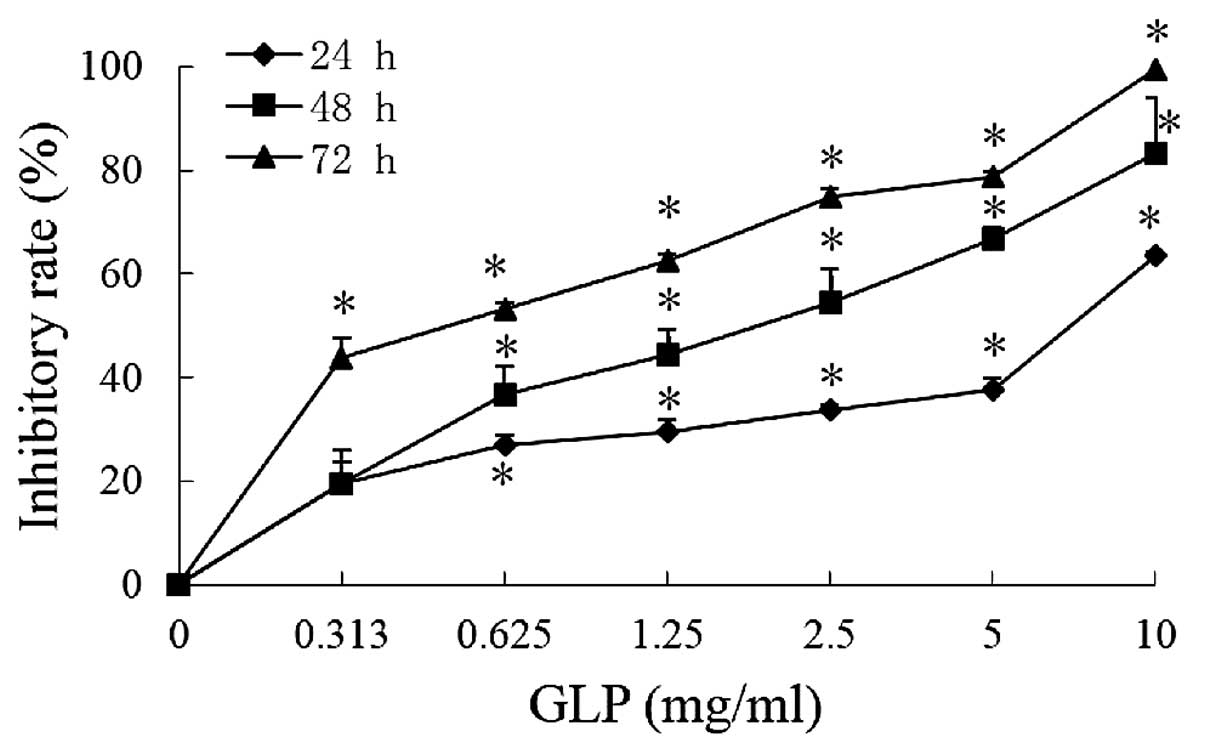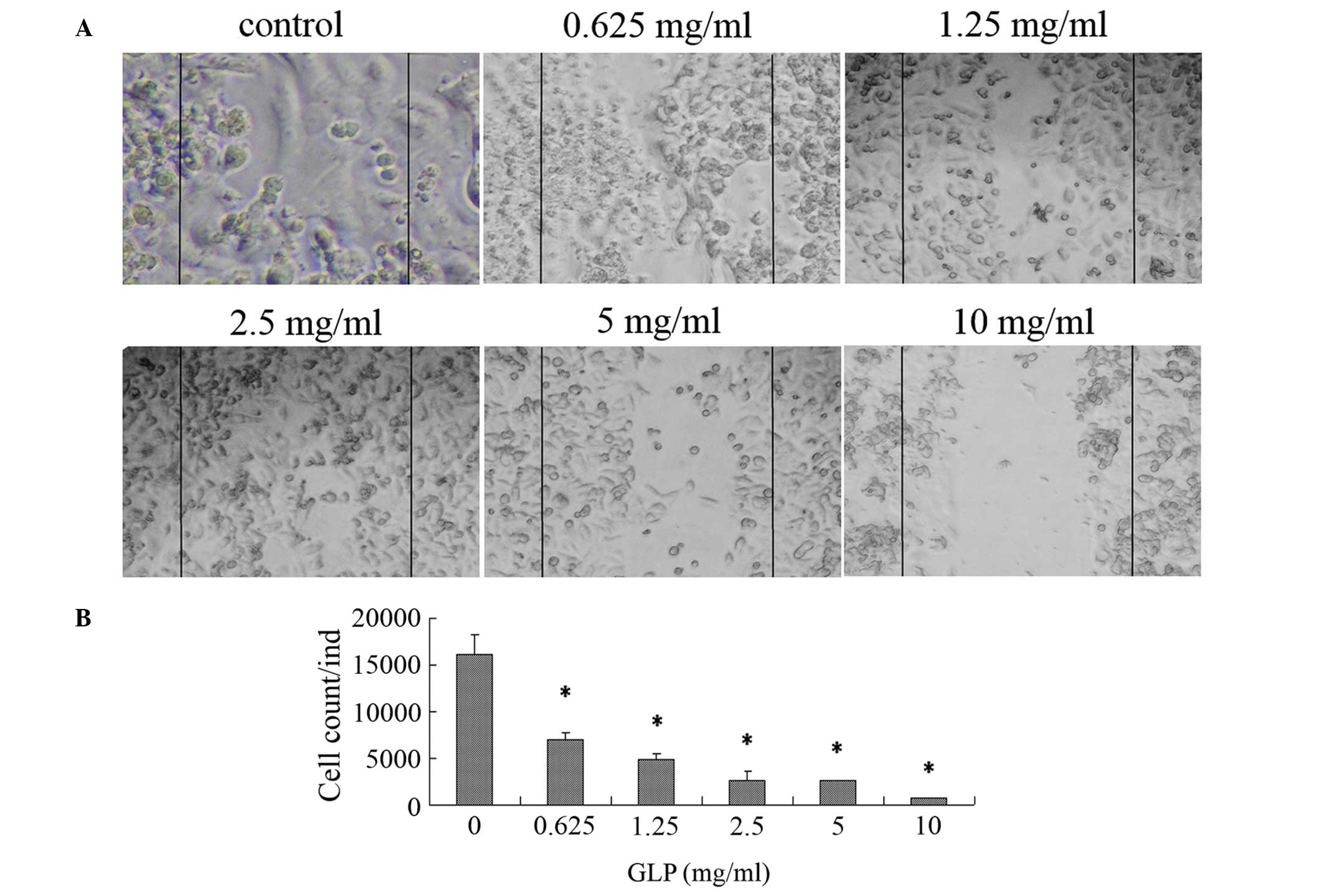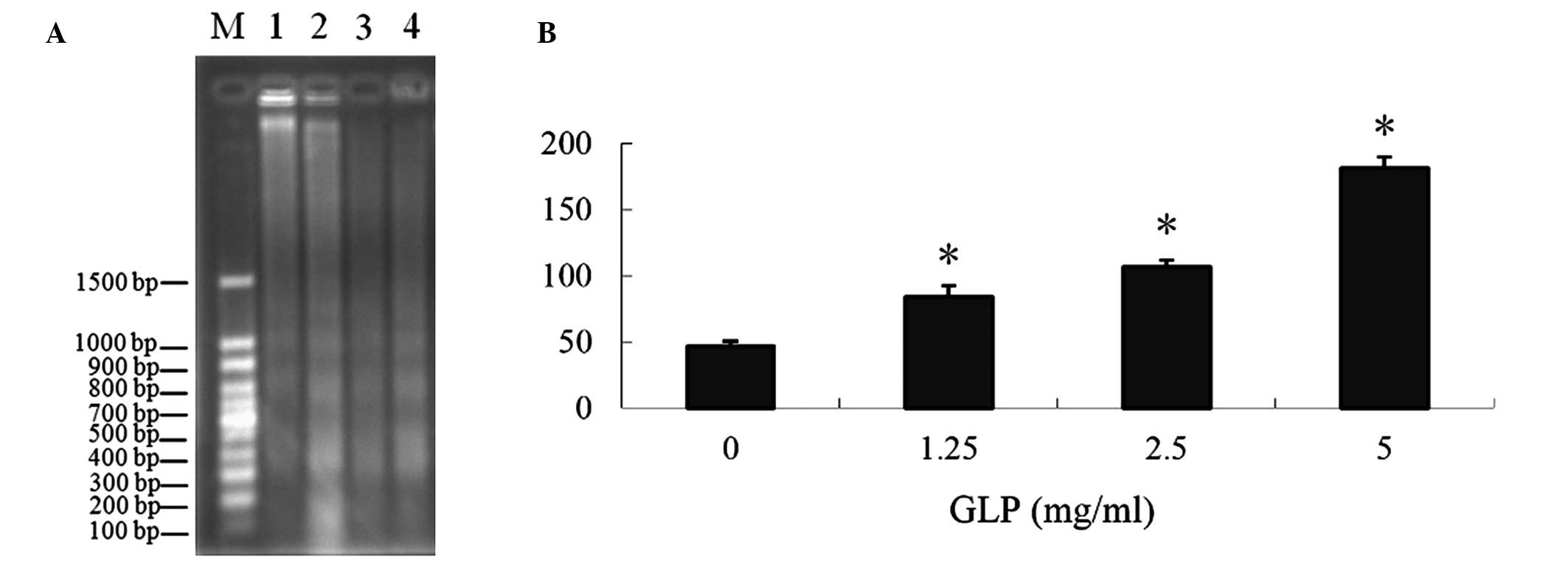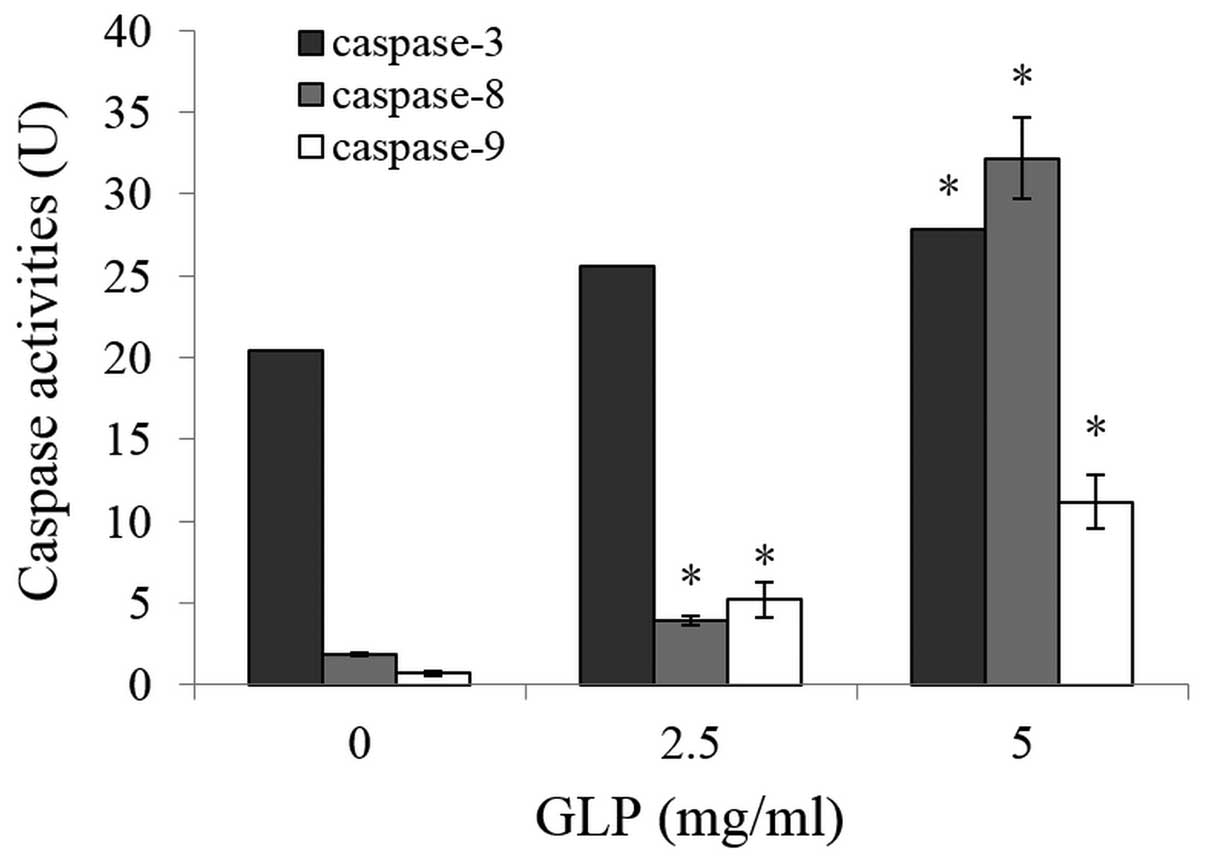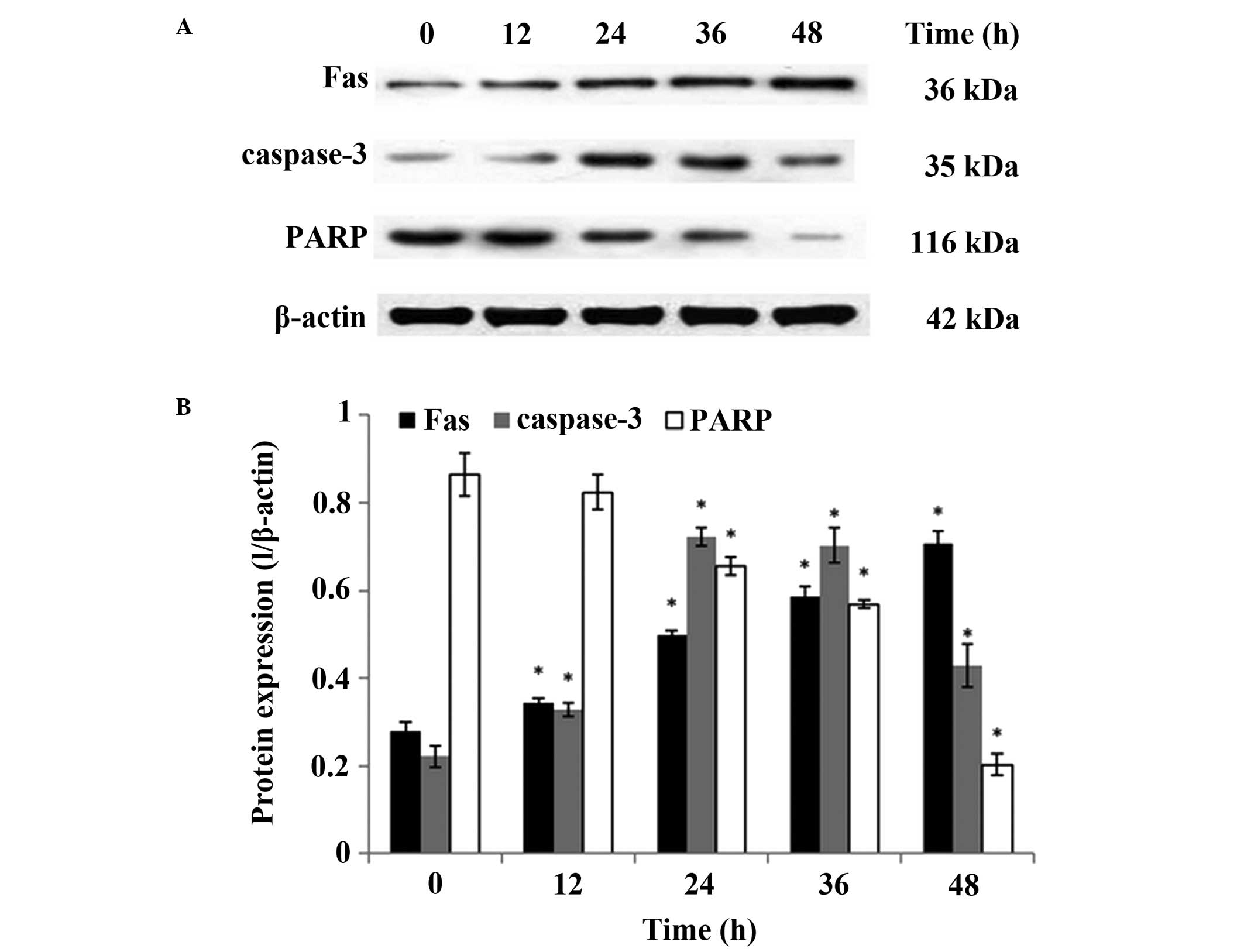|
1
|
Tokunaga T, Oshika Y, Abe Y, Ozeki Y,
Sadahiro S, Kijima H, Tsuchida T, Yamazaki H, Ueyama Y, Tamaoki N,
et al: Vascular endothelial growth factor (VEGF) mRNA isoform
expression pattern is correlated with liver metastasis and poor
prognosis in colon cancer. Br J Cancer. 77:998–1002. 1998.
View Article : Google Scholar : PubMed/NCBI
|
|
2
|
Resnick MB, Routhier J, Konkin T, Sabo E
and Pricolo VE: Epidermal growth factor receptor, c-MET,
beta-catenin, and p53 expression as prognostic indicators in stage
II colon cancer: A tissue microarray study. Clin Cancer Res.
10:3069–3075. 2004. View Article : Google Scholar : PubMed/NCBI
|
|
3
|
Siegel R, Naishadham D and Jermal A:
Cancer Statistics, 2013. Ca Cancer J Clin. 63:11–30. 2013.
View Article : Google Scholar : PubMed/NCBI
|
|
4
|
Van Cutsem E and Nordlinger B: Advanced
colorectal cancer: ESMO Clinical Practice Guidelines for treatment.
Ann Oncol. 21(Suppl 5): v93–v97. 2010. View Article : Google Scholar : PubMed/NCBI
|
|
5
|
Verweij J, Casali PG, Zalcberg J, LeCesne
A, Reichardt P, Blay JY, Issels R, van Oosterom A, Hogendoorn PC,
Van Glabbeke M, et al: Progression-free survival in
gastrointestinal stromal tumours with high-dose imatinib:
Randomised trial. Lancet. 36:1127–1134. 2004. View Article : Google Scholar
|
|
6
|
Gordon KB, Tajuddin A, Guitart J, Kuzel
TM, Eramo LR and Vonroenn J: Hand-foot syndrome associated with
liposome-encapsulated doxorubicin therapy. Cancer. 75:2169–2173.
1995. View Article : Google Scholar : PubMed/NCBI
|
|
7
|
Berkun Y, Levartovsky D, Rubinow A, Orbach
H, Aamar S, Grenader T, Abou Atta I, Mevorach D, Friedman G and
Ben-Yehuda A: Methotrexate related adverse effects in patients with
rheumatoid arthritis are associated with the A1298C polymorphism of
the MTHFR gene. Ann Rheum Dis. 63:1227–1231. 2004. View Article : Google Scholar : PubMed/NCBI
|
|
8
|
Venditto VJ and Simanek EE: Cancer
therapies utilizing the camptothecins: A review of the in vivo
literature. Mol Pharm. 7:307–349. 2010. View Article : Google Scholar : PubMed/NCBI
|
|
9
|
Bao B, Ali S, Banerjee S, Wang Z, Logna F,
Azmi AS, Kong D, Ahmad A, Li Y, Padhye S, et al: Curcumin analogue
CDF inhibits pancreatic tumor growth by switching on suppressor
microRNAs and attenuating EZH2 expression. Cancer Res. 72:335–345.
2012. View Article : Google Scholar
|
|
10
|
Tan W, Lu J, Huang M, Li Y, Chen M, Wu G,
Gong J, Zhong Z, Xu Z, Dang Y, et al: Anti-cancer natural products
isolated from chinese medicinal herbs. Chin Med. 6:272011.
View Article : Google Scholar : PubMed/NCBI
|
|
11
|
Harvey AL: Natural products in drug
discovery. Drug Discov Today. 13:894–901. 2008. View Article : Google Scholar : PubMed/NCBI
|
|
12
|
Liu GT: Recent advances in research of
pharmacology and clinical applications of Ganoderma P. Karst
species (Aphyllophoromycetideae) in China. Int J Med Mushrooms.
17:63–67. 2015.
|
|
13
|
Liu YJ, Shen J, Xia YM, Zhang J and Park
HS: The polysaccharides from Ganoderma lucidum: Are they always
inhibitors on human hepatocarcinoma cells? Carbohydr Polym.
90:1210–1215. 2012. View Article : Google Scholar : PubMed/NCBI
|
|
14
|
Xu Z, Chen X, Zhong Z, Chen L and Wang Y:
Ganoderma lucidum polysaccharides: Immunomodulation and potential
anti-tumor activities. Am J Chin Med. 39:15–27. 2011. View Article : Google Scholar : PubMed/NCBI
|
|
15
|
Shen J, Park HS, Xia YM, Kim GS and Cui
SW: The polysaccharides from fermented Ganoderma lucidum mycelia
induced miRNAs regulation in suppressed HepG2 cells. Carbohydr
Polym. 103:319–324. 2014. View Article : Google Scholar : PubMed/NCBI
|
|
16
|
Li A, Shuai X, Jia Z, Li H, Liang X, Su D
and Guo W: Ganoderma lucidum polysaccharide extract inhibits
hepatocellular carcinoma growth by downregulating regulatory T
cells accumulation and function by inducing microRNA-125b. J Transl
Med. 13:1002015. View Article : Google Scholar : PubMed/NCBI
|
|
17
|
Guo L, Xie J, Ruan Y, Zhou L, Zhu H, Yun
X, Jiang Y, Lü L, Chen K, Min Z, et al: Characterization and
immunostimulatory activity of a polysaccharide from the spores of
Ganoderma lucidum. Int Immunopharmacol. 9:1175–1182. 2009.
View Article : Google Scholar : PubMed/NCBI
|
|
18
|
Zhu XL, Chen AF and Lin ZB: Ganoderma
lucidum polysaccharides enhance the function of immunological
effector cells in immunosuppressed mice. J Ethnopharmacol.
111:219–226. 2007. View Article : Google Scholar
|
|
19
|
Qu HG, Gao L, He D, et al: Effect of
reversion of Ganoderma lucidum polysaccharides on cisplatin
resistant in ovarian cancer cells and its mechanism. J Jilin Univ
(Medicine Edition). 37:251–255. 2011.
|
|
20
|
Liang Z, Yi YJ, Guo YT, Wang RC and Xiong
XY: Effect of combined Ganoderma lucidum polysaccharides and
flurouracil proliferation and apoptosis in human colon carcinoma
HCT-116 cells. Food Sci. 33:310–314. 2012.In Chinese.
|
|
21
|
Staub AM: Removal of proteins Sevage
method. Methods Carbohydr Chem. 5:5–6. 1965.
|
|
22
|
Kochert G: Carbohydrate determination by
the phenol-sulfuric acid method. Handbook of Phycological Methods,
Vol II, Physiological and Biochemical Methods. Hellebust JA and
Craigie JS: Cambridge University Press; Cambridge: pp. 95–97.
1978
|
|
23
|
Scott RW: Colorimetric determination of
hexuronic acids in plant materials. Anal Chem. 51:936–941. 1979.
View Article : Google Scholar
|
|
24
|
Li YQ, Fang L and Zhang KC: Structure and
bioactivities of a galactose rich extracellular polysaccharide from
submergedly cultured Ganoderma lucidum. Carbohydr Polym.
77:323–328. 2008.
|
|
25
|
Hu Z, Chen X, Yang X, Gao Y and Zhou S:
Water-soluble polysaccharides of Ganoderma lucidum (W. Curt:Fr) P
Karst (Aphyllophoromycetideae) alleviate the dose-limiting
toxicities of irinotecan (CPT-11). Int J Med Mushrooms. 8:321–328.
2006. View Article : Google Scholar
|
|
26
|
Zhou GQ, Zhao HY and Lu C: Effect of
Ganoderma lucidum polysaccharides on intestinal mucosal immune
system in H22 liver cancer bearing mice. Zhongguo Zhong Xi Yi Jie
He Za Zhi. 29:335–339. 2009.In Chinese. PubMed/NCBI
|
|
27
|
Shang D, Li Y, Wang C, Wang X, Yu Z and Fu
X: A novel polysaccharide from Se-enriched Ganoderma lucidum
induces apoptosis of human breast cancer cells. Oncol Rep.
25:267–272. 2011.
|
|
28
|
Ooi VE and Liu F: Immunomodulation and
anti-cancer activity of polysaccharide-protein complexes. Curr Med
Chem. 7:715–729. 2000. View Article : Google Scholar : PubMed/NCBI
|
|
29
|
Xu W, Zhang F, Luo Y, Ma L, Kou X and
Huang K: Antioxidant activity of a water-soluble polysaccharide
purified from Pteridium aquilinum. Carbohydr Res. 344:217–222.
2009. View Article : Google Scholar
|
|
30
|
Miyazaki T and Nishijima M: Studies on
fungal polysaccharides. XXVII Structural examination of a
water-soluble, antitumor polysaccharide of Ganoderma lucidum. Chem
Pharm Bull (Tokyo). 29:3611–3616. 1981. View Article : Google Scholar
|
|
31
|
Mizuno T, Wang G, Zhang J, Kawagishi H,
Nishitoba T and Li J: Reishi, Ganoderma lucidum and Ganoderma
tsugae: Bioactive substances and medicinal effects. Food Rev Int.
11:151–166. 1995. View Article : Google Scholar
|
|
32
|
Zhang L, Zhang M, Zhou Q, Chen J and Zeng
F: Solution properties of antitumor sulfated derivative of
α-(1-->3)-D-glucan from Ganoderma lucidum. Biosci Biotechnol
Biochem. 64:2172–2178. 2000. View Article : Google Scholar : PubMed/NCBI
|
|
33
|
Kimura Y, Taniguchi M and Baba K:
Antitumor and antimetastatic effects on liver of triterpenoid
fractions of Ganoderma lucidum: Mechanism of action and isolation
of an active substance. Anticancer Res. 22:3309–3318. 2002.
|
|
34
|
Tang W, Liu JW, Zhao WM, Wei DZ and Zhong
JJ: Ganoderic acid T from Ganoderma lucidum mycelia induces
mitochondria mediated apoptosis in lung cancer cells. Life Sci.
80:205–211. 2006. View Article : Google Scholar : PubMed/NCBI
|
|
35
|
Weng CJ and Yen GC: The in vitro and in
vivo experimental evidences disclose the chemopreventive effects of
Ganoderma lucidum on cancer invasion and metastasis. Clin Exp
Metastas. 27:361–369. 2010. View Article : Google Scholar
|
|
36
|
Bao XF, Wang XS, Dong Q, Fang JN and Li
XY: Structural features of immunologically active polysaccharides
from Ganoderma lucidum. Phytochemistry. 59:175–181. 2002.
View Article : Google Scholar : PubMed/NCBI
|
|
37
|
Pan D, Wang L, Chen C, Teng B, Wang C, Xu
Z, Hu B and Zhou P: Structure characterization of a novel neutral
polysaccharide isolated from Ganoderma lucidum fruiting bodies.
Food Chem. 135:1097–1103. 2012. View Article : Google Scholar : PubMed/NCBI
|
|
38
|
Chan WK, Cheung CC, Law HK, Lau YL and
Chan GC: Ganoderma lucidum polysaccharides can induce human
monocytic leukemia cells into dendritic cells with
immunostimulatory function. J Hematol Oncol. 1:92008. View Article : Google Scholar
|
|
39
|
Doyle AD, Petrie RJ, Kutys ML and Yamada
KM: Dimensions in cell migration. Curr Opin Cell Biol. 25:642–649.
2013. View Article : Google Scholar : PubMed/NCBI
|
|
40
|
Condeelis J and Pollard JW: Macrophages:
Obligate partners for tumor cell migration, invasion, and
metastasis. Cell. 124:263–266. 2006. View Article : Google Scholar : PubMed/NCBI
|
|
41
|
Surh YJ: Cancer chemoprevention with
dietary phytochemicals. Nat Rev Cancer. 3:768–780. 2003. View Article : Google Scholar : PubMed/NCBI
|
|
42
|
Doonan F and Cotter TG: Morphological
assessment of apoptosis. Methods. 44:200–204. 2008. View Article : Google Scholar : PubMed/NCBI
|
|
43
|
Sun B, Cai Y, Li Y, Li J, Liu K, Li Y and
Yang Y: The nonstructural protein NP1 of human bocavirus 1 induces
cell cycle arrest and apoptosis in Hela cells. Virology. 440:75–83.
2013. View Article : Google Scholar : PubMed/NCBI
|
|
44
|
Nguyen TTT, Tran E, Nguyen TH, Do PT,
Huynh TH and Huynh H: The role of activated MEK-ERK pathway in
quercetin-induced growth inhibition and apoptosis in A549 lung
cancer cells. Carcinogenesis. 25:647–659. 2004. View Article : Google Scholar
|
|
45
|
Chu K, Niu X and Williams LT: A
Fas-associated protein factor, FAF1, potentiates Fas-mediated
apoptosis. Proc Natl Acad Sci USA. 92:11894–11898. 1995. View Article : Google Scholar : PubMed/NCBI
|
|
46
|
Huang DC, Hahne M, Schroeter M, Frei K,
Fontana A, Villunger A, Newton K, Tschopp J and Strasser A:
Activation of Fas by FasL induces apoptosis by a mechanism that
cannot be blocked by Bcl-2 or Bcl-x(L). Proc Natl Acad Sci USA.
96:14871–14876. 1999. View Article : Google Scholar : PubMed/NCBI
|
|
47
|
Li H, Zhu H, Xu CJ and Yuan J: Cleavage of
BID by caspase 8 mediates the mitochondrial damage in the Fas
pathway of apoptosis. Cell. 94:491–501. 1998. View Article : Google Scholar : PubMed/NCBI
|
|
48
|
Xiong J, Cheng G, Tang H, Zhen HN and
Zhang X: Ardipusilloside I induces apoptosis in human glioblastoma
cells through a caspase-8-independent FasL/Fas-signaling pathway.
Environ Toxicol Pharmacol. 27:264–270. 2009. View Article : Google Scholar : PubMed/NCBI
|
|
49
|
Larrosa M, Tomás-Barberán FA and Espín JC:
The dietary hydrolysable tannin punicalagin releases ellagic acid
that induces apoptosis in human colon adenocarcinoma Caco-2 cells
by using the mitochondrial pathway. J Nutr Biochem. 17:611–625.
2006. View Article : Google Scholar : PubMed/NCBI
|
|
50
|
Fulda S and Debatin KM: Extrinsic versus
intrinsic apoptosis pathways in anticancer chemotherapy. Oncogene.
25:4798–4811. 2006. View Article : Google Scholar : PubMed/NCBI
|



